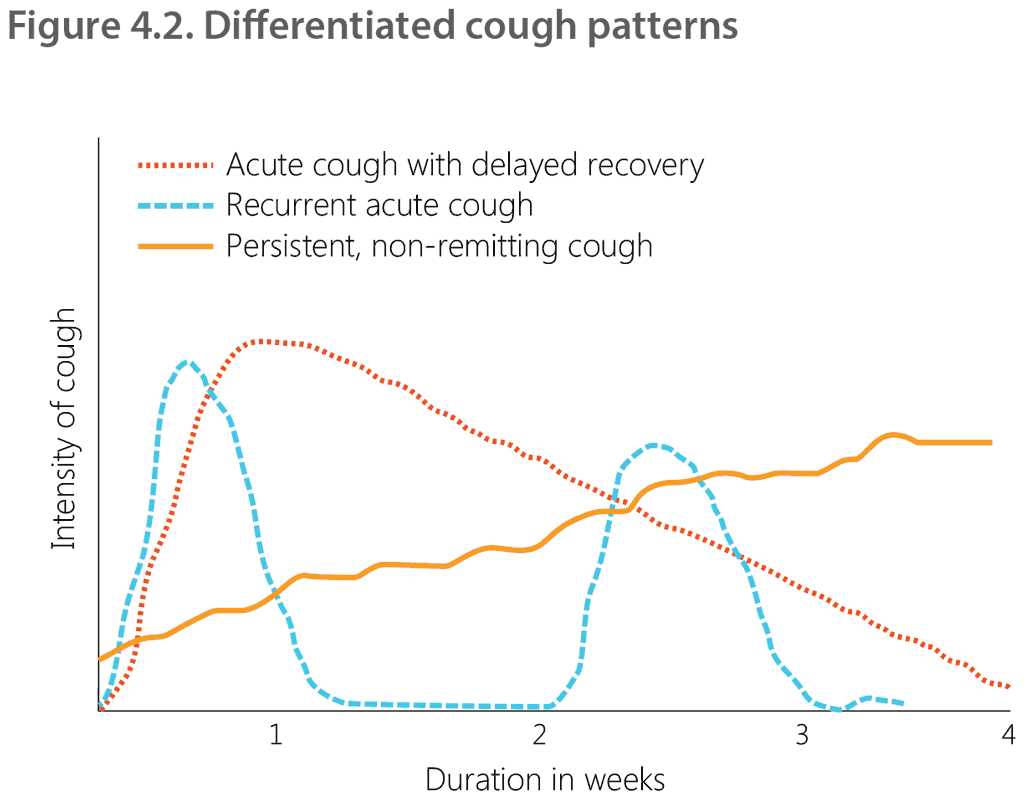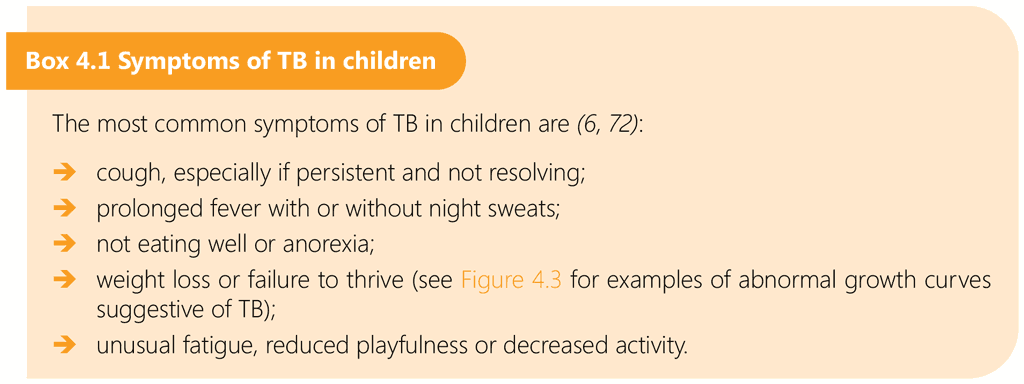Book traversal links for 4.3.1. Typical symptoms of pulmonary TB
In most cases, children with TB disease develop chronic unremitting symptoms that persist for more than 2 weeks without sustained improvement or resolution following treatment for alternative diagnoses (e.g. antibiotics for pneumonia, antimalarials for fever, nutritional rehabilitation for failure to thrive or malnutrition). The most common clinical presentation of PTB in children is persistent cough and poor weight gain. Figure 4.2 illustrates different cough patterns, which may be useful to visualize how a persistent, non-remitting cough presents. In high-risk groups such as children living with HIV and infants, PTB may present as acute pneumonia. The approach to diagnosis of TB in children living with HIV is similar to that for children without HIV infection (6, 72), but there should be an increased
risk perception. Box 4.1 summarizes the most common symptoms of TB in children.

Research has shown that identification of symptoms with a persistent, non-remitting character is possible at PHC level, even in resourcelimited settings. A persistent, non-remitting cough was uncommon in this study but was almost exclusively (88.9%) associated with TB.
Source: Marais BJ, Gie RP, Obihara CC, et al. Well defined symptoms are of value in the diagnosis of childhood pulmonary tuberculosis. Arch Dis Child. 2005;90(11):1162–1165.

 Feedback
Feedback